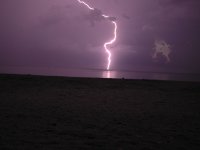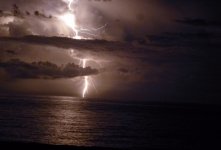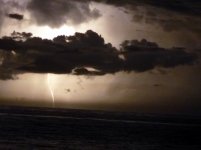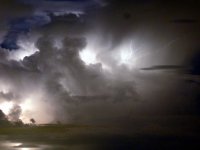From 120 million units in 2010 to 9 million units in 2021.
http://www.stevehuffphoto.com/2020/08/02/camera-sales-are-in-the-crapper/
http://www.stevehuffphoto.com/2020/08/02/camera-sales-are-in-the-crapper/
Don’t forget that most cameras are now in your phone, there are way more of them.
And the best are very good, so good the filmmakers will fly iPhone Maxes. They will not be sad if they lose a couple grand phone vrs losing a quarter million ARRI Aiexa (name proceeds the Amazon junk)
So camera Sales are way up, but most do way more than take picture.
As an aside I got to eat one of these today

dave
And the best are very good, so good the filmmakers will fly iPhone Maxes. They will not be sad if they lose a couple grand phone vrs losing a quarter million ARRI Aiexa (name proceeds the Amazon junk)
So camera Sales are way up, but most do way more than take picture.
As an aside I got to eat one of these today
dave
True.the filmmakers will fly iPhone Maxes. They will not be sad if they lose a couple grand phone vrs losing a quarter million ARRI Aiexa
Just finished watching a simple and beautiful Japanese Movie:
https://www.imdb.com/title/tt6572190/

clearly filmed with a smartphone or two.
Very amateurish camera work (and that´s an understatement), they didn´t even care to use one of those selfie sticks as a camera support, let alone a tripod or, God forbid, a SteadyCam (an amateur one can be bought for U$25 at 4maz0n) so constant camera shaking was very distracting ... and yet they made a first class commercial movie!
Pentax......Sitting lonely in the bedroom closet for decades, but always created beautiful photographs.

Low-res JPG copy of a shot from the top of Bowman's Hill Tower near New Hope Pa in 1993.....

Low-res JPG copy of a shot from the top of Bowman's Hill Tower near New Hope Pa in 1993.....
Try getting film, or find a film lab still running.
The last Ektachrome (slide) film batch was processed in 2007 in the USA.
Digital cameras were a flimsy joke, and the sheer convenience of a smartphone camera, the ability to send images instantly, made even die hard film users stop using their film cameras.
Now the wedding film people mix the recording on laptops, and hand over a USB stick when leaving the venue, finished product.
Remember the VCR days, and the time taken to get the copies?
Now it is on the web at a secure portal, you can watch the ceremony on line from you net connected device any where in the world.
Think of the postage saved...
The last Ektachrome (slide) film batch was processed in 2007 in the USA.
Digital cameras were a flimsy joke, and the sheer convenience of a smartphone camera, the ability to send images instantly, made even die hard film users stop using their film cameras.
Now the wedding film people mix the recording on laptops, and hand over a USB stick when leaving the venue, finished product.
Remember the VCR days, and the time taken to get the copies?
Now it is on the web at a secure portal, you can watch the ceremony on line from you net connected device any where in the world.
Think of the postage saved...
Last edited:
You're thinking Kodachrome.
Not only is Ektachrome being made today, it is once again being made in Rochester(home of Kodak).
I process it, chemistry is fairly easy to get,
Fuji and Kodak are steady, Adox and a few others have been running trial batches.
35mm,120,4x5 & 8x10 normally, I've gotten my favorite 5x7, but special order.
The master rolls are now only several feet wide, once they were 22 feet(when they were making billions of rolls a year, rather than a few million).
The huge buildings(a few over a mile long), giant machines really, were demolished ten years ago. There's a tour of the current facility on youtube.
Not only is Ektachrome being made today, it is once again being made in Rochester(home of Kodak).
I process it, chemistry is fairly easy to get,
Fuji and Kodak are steady, Adox and a few others have been running trial batches.
35mm,120,4x5 & 8x10 normally, I've gotten my favorite 5x7, but special order.
The master rolls are now only several feet wide, once they were 22 feet(when they were making billions of rolls a year, rather than a few million).
The huge buildings(a few over a mile long), giant machines really, were demolished ten years ago. There's a tour of the current facility on youtube.
Last edited:
Negative films are much more available, as motion pictures and portraits are still shot originally on film, for the much more flattering spectral response,
then reproduced digitally for economy of distribution(and manipulation, of course).
Black and white negative materials are doing quite well.
On the digital side, great strides have been made in tonal reproduction, through the use of muliple exposures at different levels almost simultaneously.
Less progress on multiplying spectral sensitivities of the sensors, it will come eventually.
then reproduced digitally for economy of distribution(and manipulation, of course).
Black and white negative materials are doing quite well.
On the digital side, great strides have been made in tonal reproduction, through the use of muliple exposures at different levels almost simultaneously.
Less progress on multiplying spectral sensitivities of the sensors, it will come eventually.
do you have youtube link for this mov?True.
Just finished watching a simple and beautiful Japanese Movie:
https://www.imdb.com/title/tt6572190/

clearly filmed with a smartphone or two.
Very amateurish camera work (and that´s an understatement), they didn´t even care to use one of those selfie sticks as a camera support, let alone a tripod or, God forbid, a SteadyCam (an amateur one can be bought for U$25 at 4maz0n) so constant camera shaking was very distracting ... and yet they made a first class commercial movie!
You have a PMdo you have youtube link for this mov?
Spot on boswold. I shoot digital, but still do film as well. B&W development is easy, colour a bit more difficult, but not onerous. Probably the biggest issue for most people shooting film is how to get the analog image into the digital realm for processing with the myriad of photo apps. I got lucky and picked up a Nikon Coolscan 8000 years ago which does an awesome job of scanning everything from 35mm to 6x9.Negative films are much more available, as motion pictures and portraits are still shot originally on film, for the much more flattering spectral response,
then reproduced digitally for economy of distribution(and manipulation, of course).
Black and white negative materials are doing quite well.
On the digital side, great strides have been made in tonal reproduction, through the use of muliple exposures at different levels almost simultaneously.
Less progress on multiplying spectral sensitivities of the sensors, it will come eventually.
I won't claim digital is better than analog, or vice versa, they are different analogous to oil and water colours in painting.
Coming from the film era and making a living with photography, it's astonishing the advances made in digital photography.
The problem with digital lies in the ease of use.
Anyone that can take a picture call themselves a photographer today.
I've even come across "photographers" that can't shoot without auto-focus.
Film is much more demanding and rewarding.
There's very little room for error.
The problem with digital lies in the ease of use.
Anyone that can take a picture call themselves a photographer today.
I've even come across "photographers" that can't shoot without auto-focus.
Film is much more demanding and rewarding.
There's very little room for error.
Absolutely correct, Michael. Film photography is like a single shot rifle, digital like a 12 gauge shotgun.Coming from the film era and making a living with photography, it's astonishing the advances made in digital photography.
The problem with digital lies in the ease of use.
Anyone that can take a picture call themselves a photographer today.
I've even come across "photographers" that can't shoot without auto-focus.
Film is much more demanding and rewarding.
There's very little room for error.
I've watched a thriller on Prime and thought the photography was quite good and original. In the end credits, it was mentioned the whole movie was shot on iPhones (!).
The quality you can get from these nowadays is astounding.
In addition, there are a lot more options nowadays for post-processing, including AI-based solutions that completely trump the traditional algorithmic ones.
I have dabbled with installing alternate firmwares for smaller Canon (Powershot-style) cameras, allowing them to store RAW files on the SD Card. These are not lossy-compressed as the images usually are by default. You can also do movies this way and post-process them with less artifacts.
This said, we also had components shortage and other supply chain disruptions, with concomitant price surges, so this can also explain why sales are down.
I think I'd like to get into more serious digital photography, perhaps with a mirror-less camera as I never tried one. I am particularly interested in macro-photography for Electronics and Nature, things like that.
I combined some salvaged lenses with a small Canon and managed to do a blown-up Macro shot of a damaged red LED. It was amazing.
The quality you can get from these nowadays is astounding.
In addition, there are a lot more options nowadays for post-processing, including AI-based solutions that completely trump the traditional algorithmic ones.
I have dabbled with installing alternate firmwares for smaller Canon (Powershot-style) cameras, allowing them to store RAW files on the SD Card. These are not lossy-compressed as the images usually are by default. You can also do movies this way and post-process them with less artifacts.
This said, we also had components shortage and other supply chain disruptions, with concomitant price surges, so this can also explain why sales are down.
I think I'd like to get into more serious digital photography, perhaps with a mirror-less camera as I never tried one. I am particularly interested in macro-photography for Electronics and Nature, things like that.
I combined some salvaged lenses with a small Canon and managed to do a blown-up Macro shot of a damaged red LED. It was amazing.
Indeed!I've even come across "photographers" that can't shoot without auto-focus.
Film is much more demanding and rewarding.
There's very little room for error.
Using your brain, learning and understanding procedures is something that these days is lacking in many.
"It's become a Pushbutton Society" - no need to think, just press that button and let the machine do the work.
My classic Pentax K-1000 is totally manual, before I press that shutter button, I do all the preliminary brain work/adjustments.
My first camera was a Konica, fully manual, upgraded to a T3 & then someone gave me a Minolta that supported my lens set. I found the autofocus a PITA.Pentax K-1000
The phone thou is a point & shoot most of the time, casual photo
My buddy with the ARRIs is planning to grab a dozen iPhone ProMax to support the Alexas in his next shoot.
I do dream of one of the big Sonys to use for better work.
dave
I used to process Ektachrome (E6 I believe) in my darkroom at home and print it on Cibachrome. I also did color negatives using C41 and printed them. That was quite some time ago. I often made color contact sheets for every roll of film I shot to save the cost of making prints of lousy pictures.You're thinking Kodachrome.
Not only is Ektachrome being made today, it is once again being made in Rochester(home of Kodak).
I process it, chemistry is fairly easy to get,
Shooting film meant that pushing the shutter button cost you money and processing time, so you thought about each shot you took. This made spur of the moment shots less likely to happen or be successful. I have lots of blurry images of NFL games, rock concerts, auto racing and other events requiring fast reflexes.
I got a Nikon Coolpix 880 some time around 2000. It changed the way I took pictures almost overnight. Some of this was for the good, some not so good. A digital camera costs nothing to use, so the photographer can become lazy. It's now too easy to put the camera in PHD mode (Push Here Dummy), pop in a 256 GB card or bigger, set it on time lapse to take a picture every second or faster, put it on a tripod and let the camera do the work. Lazy, yes. Useful? Why would you do this?
What are your odds of manually catching that lightning bolt in a thunderstorm, or that bird flying away from a dive in the ocean with a fish in its mouth, while waiting patiently with your finger on the shutter button.? In 20+ years of chasing lightning with a camera, this is the only good picture caught manually that I have. It did come from the old Coolpix 880. The next 3 happened on the same night using a somewhat different lazy method that is easy on a digital camera but could be done with film. Ditto, myself, the sun and the boat all being in the picture at the same time. It is one of 45 pictures taken in timelapse mode. The other 44 are useless, but cost nothing to take.
I got a Motorola G Stylus smartphone yesterday for my 70th birthday. It claims to have a 50 Megapixel camera. I spent much of the day playing with it. It will not kick the mirrorless or the DSLR off the tripod, but it could become yet another weapon in my arsenal for capturing the images of my world. There likely be no more pictures from Captiva due to the destruction that hurricane Ian unleashed on the island. Much of the playground where I took these pictures is gone. It was trashed pretty bad in 2005 which took 2 years to rebuild. This time the damage is much worse.
Attachments
Yes. There are quite a few videos of how people film with iPhones, so you can watch the movie and then see how it was made. Some of these guys are quite ingenuous. There are iPhone stedicam rigs, special lens, a whole growing support ecosystem is growing. But the camera is so small a stabilized drone can replace whole swaths of the kit used to do the same thing with the likes of ARRI or Panaflex
There are all so some amazing videos of the big 8 bladed drone flying quarter million dollar Alexa Minis
dave
There are all so some amazing videos of the big 8 bladed drone flying quarter million dollar Alexa Minis
dave
The big advantage of modern high-end smartphones over a traditional digital camera is the onboard image processing. The computing power of latest smartphones is insanely high: they catch and rectify any trivial mistake, and make it easy to take good "cliché" pictures and videos. It greatly raised the bar for expected minimum quality of any picture or video we see. While this meant the demise of cheap cameras, it is a great news for anyone in the photo/video hobby or profession. The automation is unable to convey meaning and purpose to the image. Thought and knowledge are required, and they are appreciated more than ever now, because the results stands out clearly in a sea of boring automated pictures, while in the past our world was less visual - only few people had a camera or took pictures. I also believe that another big change driven by the smartphone is the video. Anyone with a camera is now expected to also take videos, while in the past it was a clearly different activity. No wonder that modern digital cameras also have decent video features - the skill set to take videos should be known.
- Home
- Member Areas
- The Lounge
- Camera sales have fallen





